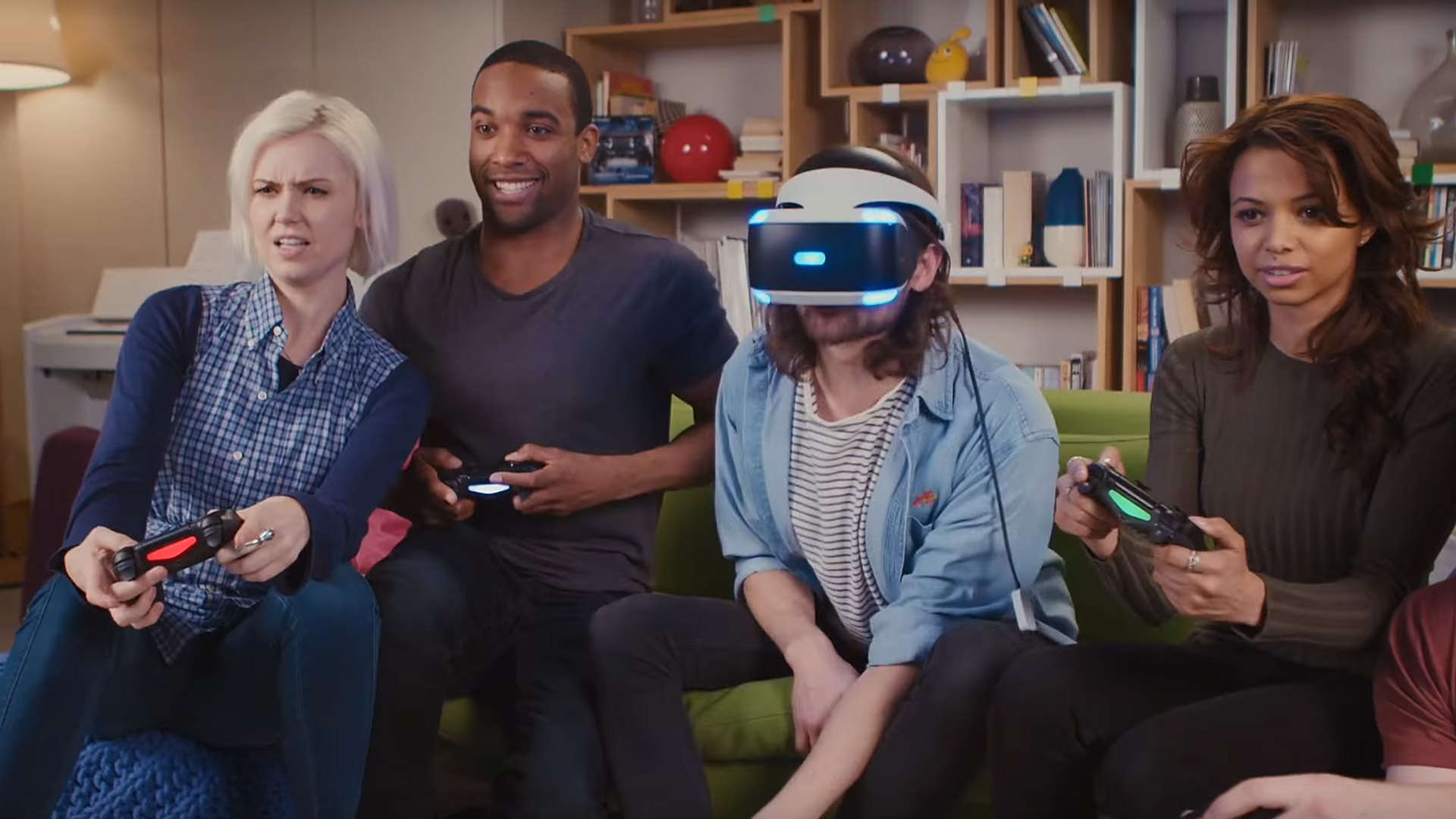
Virtual reality (VR) gaming has revolutionized the way we experience video games, creating immersive and interactive worlds that blur the line between real and virtual. With advancements in technology and growing popularity, VR gaming has become more accessible to gamers of all types. But, beyond the captivating gameplay and stunning visuals, there are many extraordinary facts about virtual reality gaming that you may not be aware of. From mind-blowing statistics to unexpected uses, VR gaming continues to amaze and intrigue both gamers and non-gamers alike. In this article, we will explore sixteen extraordinary facts about virtual reality gaming that will leave you speechless. So, fasten your seatbelts and get ready to dive into the mind-bending world of VR gaming!
Key Takeaways:
- Virtual reality (VR) gaming offers immersive experiences, multiplayer interactions, and potential therapeutic benefits, revolutionizing the gaming industry and extending beyond entertainment.
- VR gaming is not just a trend; it’s a growing industry with endless possibilities, from overcoming fears to enhancing cognitive skills, making it the future of gaming.
VR Gaming is Revolutionizing the Gaming Industry
Virtual reality (VR) gaming has taken the gaming industry by storm, offering players an immersive and realistic gaming experience like never before. With the use of cutting-edge technology, players can now step into a virtual world and interact with their surroundings in ways that were once unimaginable.
The Birth of VR Gaming
The concept of virtual reality gaming originated in the 1960s, but it wasn’t until the 1990s that the first commercial VR gaming system, known as the Virtuality, was introduced to the public. Since then, VR gaming has evolved significantly, with advancements in hardware and software bringing it to the mainstream market.
VR Arcades are on the Rise
As VR technology continues to advance, VR arcades have become increasingly popular. These arcades offer a wide range of VR gaming experiences, allowing players to try out different games and immerse themselves in virtual worlds without having to invest in expensive VR equipment.
VR Gaming is More Than Just Entertainment
While VR gaming provides hours of entertainment, its potential goes beyond that. Virtual reality has been utilized in various industries, including education, healthcare, and training simulations. It offers a unique opportunity for individuals to learn, explore, and experience things in a safe and controlled environment.
VR Fitness is a Thing
Gone are the days when gaming was considered a sedentary activity. VR gaming has introduced a new wave of fitness experiences, enabling players to engage in physical activities while enjoying their favorite games. From boxing simulations to dancing games, VR fitness provides an exciting way to stay active and have fun.
VR Headsets Come in Different Forms
There are various types of VR headsets available, catering to different needs and budgets. From high-end systems like the Oculus Rift and HTC Vive, to more affordable options like the PlayStation VR and Oculus Quest, there is a VR headset for everyone.
VR Gaming is Continuously Evolving
The world of VR gaming is constantly evolving, with developers pushing boundaries and introducing new technologies. From improved graphics and motion tracking to haptic feedback and social VR experiences, the future of VR gaming looks promising and exciting.
VR eSports is on the Rise
As the popularity of VR gaming grows, so does the emergence of VR eSports. Tournaments and competitions dedicated to VR games are becoming more prevalent, offering gamers the opportunity to showcase their skills and compete for prizes.
VR Gaming Offers Multiplayer Experiences
Virtual reality gaming goes beyond solitary gameplay. Many VR games are designed to be multiplayer, allowing players to interact and collaborate with friends and players from around the world in a virtual environment.
VR Gaming Can Help Overcome Fears and Phobias
Virtual reality has proven to be an effective tool in exposure therapy, assisting individuals in facing and overcoming their fears and phobias. By creating realistic simulations in a controlled environment, VR gaming can provide a safe space for individuals to confront their anxieties.
VR Gaming Requires Powerful Hardware
In order to experience VR gaming to its full potential, players need powerful hardware to render high-quality graphics and ensure smooth gameplay. This includes a capable gaming PC or console, along with a VR headset and controllers.
VR Gaming Offers Endless Possibilities
The possibilities of VR gaming are virtually limitless. From exploring fantastical worlds and solving puzzles to engaging in intense battles and creating art in three dimensions, VR gaming opens up a whole new realm of experiences for gamers.
VR Gaming is Not Limited to Gaming
Virtual reality extends beyond gaming. VR applications have been developed for various purposes, including architectural visualization, virtual tourism, and even virtual concerts and events.
VR Gaming Can Enhance Cognitive Skills
Studies have shown that VR gaming can have cognitive benefits, such as improving spatial awareness, enhancing memory, and boosting problem-solving skills. The immersive nature of VR gaming engages the brain in unique ways, leading to cognitive improvements.
VR Gaming Can Provide Therapeutic Benefits
Virtual reality has been used as a therapeutic tool for individuals with physical and mental health conditions. VR gaming can help with pain management, rehabilitation, and even provide an escape for those dealing with anxiety or depression.
VR Gaming is Here to Stay
Virtual reality gaming is not just a passing trend. With ongoing advancements in technology, increased accessibility, and a growing demand for immersive experiences, VR gaming is set to become even more prominent in the future.
Conclusion
Virtual reality (VR) gaming has revolutionized the way we experience interactive entertainment. With its immersive capabilities, realistic graphics, and seamless integration, VR gaming has captured the imagination of gamers worldwide. As we explored the extraordinary facts about VR gaming, it became evident that this technology has opened up new possibilities and continues to push boundaries.
From the mind-bending concept of virtual reality to the development of advanced motion-tracking systems, VR gaming has come a long way. It has not only transformed the gaming industry but also has the potential to impact various sectors like education, healthcare, and training. As VR gaming equipment becomes more accessible and affordable, we can expect to see its widespread adoption and further advancements in the future.
Whether you are a seasoned gamer or just curious about the latest innovations, diving into the world of VR gaming is a thrilling and immersive experience. So grab your VR headset, step into a virtual world, and get ready to embark on exciting adventures like never before!
FAQs
1. What is virtual reality (VR) gaming?
Virtual reality gaming is an immersive form of gaming that uses a headset and motion-tracking devices to create a simulated environment. Players can interact with this virtual world and have a more immersive and realistic gaming experience.
2. What equipment do I need for VR gaming?
To enjoy VR gaming, you will need a VR headset, motion controllers, and a powerful computer or gaming console that meets the minimum requirements for running VR software.
3. Is VR gaming only for hardcore gamers?
No, VR gaming is for everyone! While hardcore gamers may appreciate the immersive experience, VR gaming also caters to casual gamers looking for a new and exciting way to play.
4. Can VR gaming cause motion sickness?
Sometimes VR gaming can cause motion sickness, especially in players who are prone to it. Taking breaks, adjusting the settings, and gradually building up tolerance can help reduce the chances of experiencing motion sickness.
5. Are there any health risks associated with VR gaming?
When used in moderation and according to the manufacturer’s guidelines, VR gaming is generally safe. However, prolonged use may cause eye strain, discomfort, and fatigue. It is essential to take regular breaks and listen to your body.
Immersing yourself in the extraordinary world of virtual reality gaming is just the beginning. Want to take your VR experience to new heights? Consider investing in a standalone VR headset for the ultimate untethered adventure. These powerful devices offer a truly portable and immersive gaming experience without the need for external hardware or cables.
Was this page helpful?
Our commitment to delivering trustworthy and engaging content is at the heart of what we do. Each fact on our site is contributed by real users like you, bringing a wealth of diverse insights and information. To ensure the highest standards of accuracy and reliability, our dedicated editors meticulously review each submission. This process guarantees that the facts we share are not only fascinating but also credible. Trust in our commitment to quality and authenticity as you explore and learn with us.


